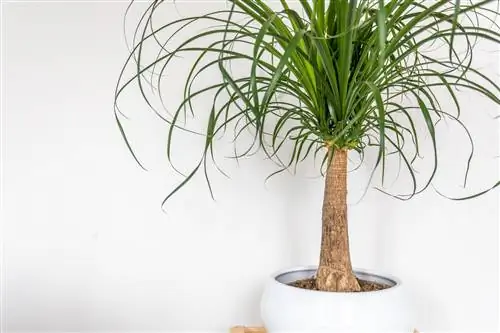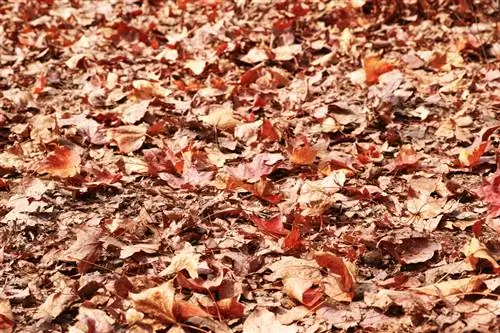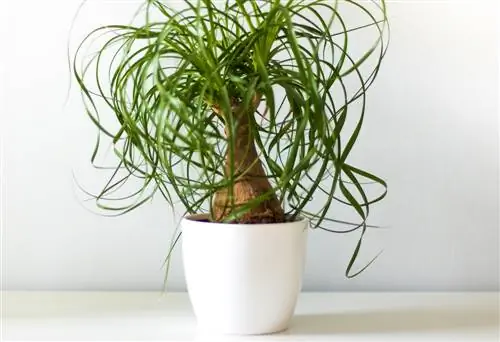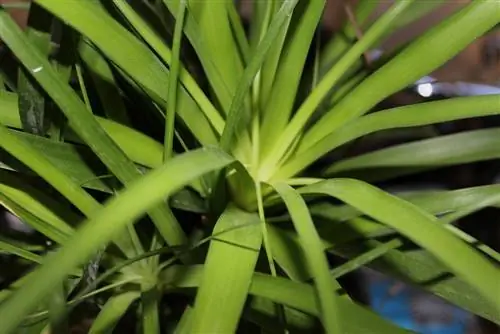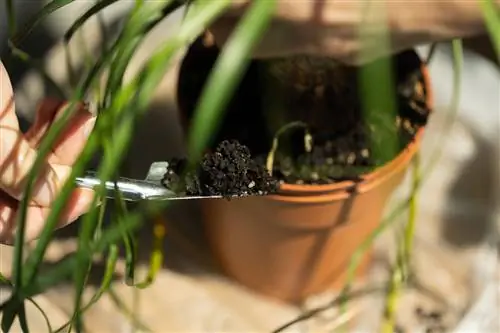- Author admin [email protected].
- Public 2023-12-16 16:46.
- Last modified 2025-01-23 11:22.
The elephant's foot (Beaucarnea recurvata) is an evergreen tree with an unusually thickened trunk base. In its homeland, the popular houseplant can reach considerable heights and develop trunks up to four meters wide. How do you properly fertilize the plant with the funny name?

How and with what should you fertilize the elephant's foot?
In fact, you only have to fertilize the elephant's foot verysparingly, because the bizarre plant copes well with a small supply of nutrients. A commercially availablecactus fertilizeris suitable for fertilization, butgreen plant fertilizer can also be used - but only in half the dosage.
What fertilizer does an elephant foot need?
The easiest way is to provide the elephant's foot with acactus or green plant fertilizer. You can also use other fertilizers, such as citrus fertilizer or fertilizer for Mediterranean plants. Just make sure that the product you choose is composed appropriately for the species. Fertilizers that containlow nitrogenandmore potassium are ideal for elephant foot. The species, also known as the bottle tree, grows slowly and therefore hardly needs any nitrogen. Potassium is even more important because this substance regulates the water balance of the succulent plant.
When and how should you fertilize the elephant foot?
Fertilize the elephant foot onlybetween April and October. In the cold season, the plant takes a winter break and does not need to be fertilized during this time. After repotting, you should wait about eight weeks before fertilizing for the first time.
If you fertilize with cactus fertilizer, apply it aboutevery six weeksif possible in liquid form together with the irrigation water. Green plant and other fertilizers with a higher nutrient content, however, only need to be appliedtwo to three timesduring the growing season. Please also make sure to only give these fertilizersdiluted - i.e. in a lower dose than the dose specified by the manufacturer.
Can you fertilize the elephant's foot with home remedies?
Coffee groundsis suitablevery goodfor fertilizing the elephant's foot: The tried and tested home remedy contains a lot of potassium and phosphorus, but relatively little nitrogen. Coffee grounds also acidify the substrate, which is also good for the exotic houseplant. Instead of a normal liquid fertilizeryou can also supply the elephant's foot from time to time with atablespoon of dried coffee grounds, which you work superficially into the substrate and then the plant water thoroughly.
What happens if you fertilize the elephant's foot incorrectly?
If you fertilize the elephant's foottoo little, this will not be noticeable for a long time. After a while, you may wonder why the plant has stopped growing.brown leaves can also be a sign of nutrient deficiency.
Yellow leaves, on the other hand, are a typical sign ofOverfertilization, as well as so-calledhorny growthThis produces many leaves, but they remain pale and weak. In addition, excessive fertilization increases the risk of pathogens or pests becoming established.
Tip
Where does the elephant's foot come from?
The elephant's foot is primarily at home in Mexico, where it has adapted perfectly to the barren and dry conditions there. However, do not confuse the elephant's foot with the visually very similar bottle tree (Brachychiton), which is native to Australia.

